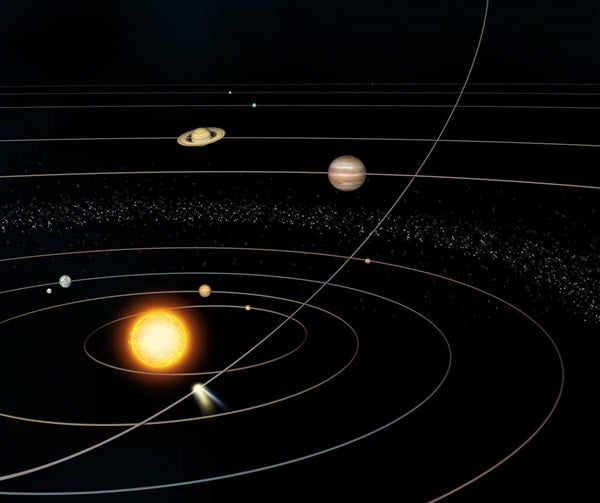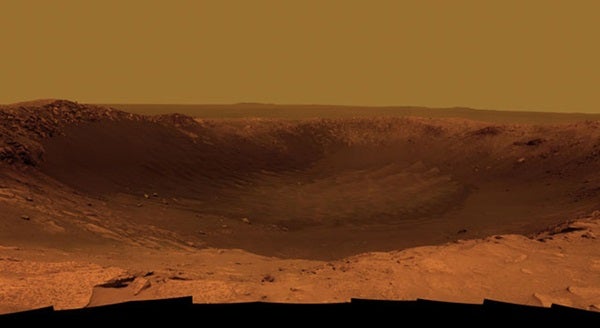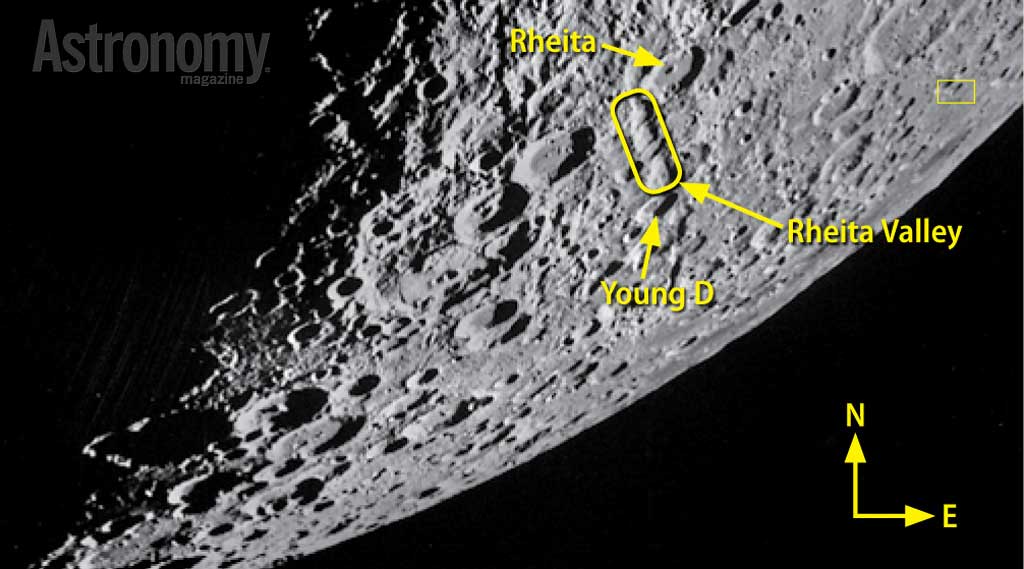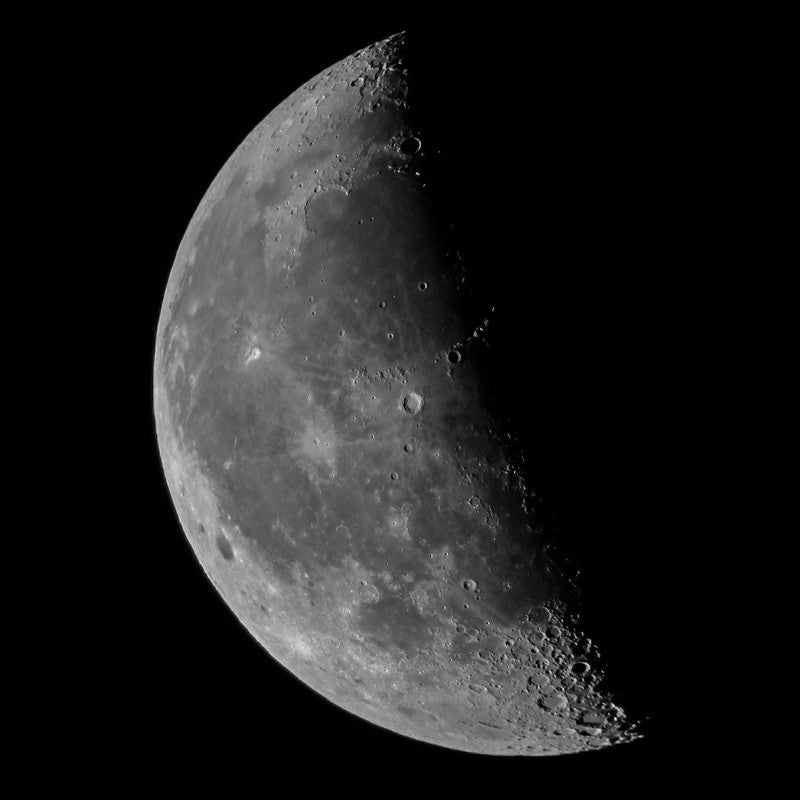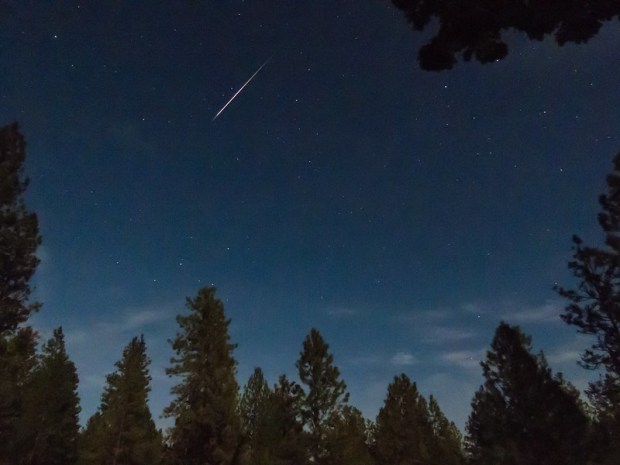First Quarter Moon arrives at 6:22 p.m. EDT. Our satellite rises in the southeast around 2 p.m. local daylight time, but it doesn’t become prominent until the Sun sets near 6 p.m. (The Moon then lies in the south and about one-third of the way to the zenith.) After darkness falls, the Moon’s half-lit orb appears in the western part of the constellation Capricornus.
Saturday, October 28
The next few days offer a nice opportunity to view the zodiacal light. From the Northern Hemisphere, early autumn is the best time of year to observe this elusive glow before sunrise. It appears slightly fainter than the Milky Way, so you’ll need a clear moonless sky and an observing site located far from the city. Look for the cone-shaped glow, which points nearly straight up from the eastern horizon, shortly before morning twilight begins (around 6 a.m. local daylight time at mid-northern latitudes). The Moon returns to the morning sky November 3, however, and its bright light will overwhelm the much fainter zodiacal light.
Sunday, October 29
The second-brightest asteroid of 2017 puts on a nice show in late October. Minor planet 7 Iris reaches opposition and peak visibility tonight, when it glows at magnitude 6.9 among the background stars of Aries the Ram. This region appears halfway to the zenith in the eastern sky at midevening and passes close to overhead around midnight local daylight time. Look for it through binoculars 1.7° south of Aries’ brightest star, magnitude 2.0 Hamal (Alpha [α] Arietis), and 1.0° south of magnitude 5.0 Kappa (κ) Ari.
Mars stands out in the eastern sky before dawn this week. The magnitude 1.8 Red Planet rises nearly three hours before the Sun and appears 20° high an hour before sunup. It resides among the background stars of Virgo, and this morning it lies 0.3° southwest of 4th-magnitude Eta (η) Virginis. Even more impressive, Mars stands nearly on top of 6th-magnitude 13 Vir. As twilight begins on the East Coast, they appear just 44″ apart; from the West Coast, 4.2′ separate the two.
Tuesday, October 31
Although the Orionid meteor shower peaked 10 days ago, the shower remains active until November 7. And with the Moon setting around 3 a.m. local daylight time (some three hours before twilight begins), observers can expect to see a few “shooting stars” in the predawn sky. To differentiate an Orionid from a sporadic, remember that a shower meteor will appear to radiate from the northern part of the constellation Orion the Hunter.
Wednesday, November 1
Venus rises around 6 a.m. local daylight time and dominates the morning sky from then until close to sunrise. Gleaming at magnitude –3.9, no other point of light comes close to matching this planet’s brilliance. As a bonus today, Venus passes 4° due north of Virgo’s brightest star, 1st-magnitude Spica. The planet shines 100 times brighter than the star.
Thursday, November 2
Uranus reached opposition and peak visibility two weeks ago, and it remains a tempting target all this week. The outer planet appears in the southeastern sky during midevening and climbs highest in the south around midnight local daylight time. The magnitude 5.7 world lies in southeastern Pisces, 2.3° west of magnitude 4.3 Omicron (ο) Piscium, the brightest star in this part of Pisces. Although Uranus shines brightly enough to glimpse with the naked eye under a dark sky, use binoculars to locate it initially. A telescope reveals the planet’s blue-green disk, which spans 3.7″.
Full Moon officially arrives at 1:23 a.m. EDT tomorrow morning (10:23 p.m. PDT this evening). You can find it rising in the east around sunset and peaking in the south just before 1 a.m. local daylight time. It dips low in the west by the time morning twilight starts to paint the sky. The Moon lies on the border between the constellations Pisces and Cetus.
Saturday, November 4
Saturn remains a tempting target in this week’s early evening sky. The ringed planet stands 15° above the southwestern horizon an hour after sunset and remains 10° high at twilight’s close. Shining at magnitude 0.5, it appears four times brighter than any of the background stars in its host constellation, Ophiuchus the Serpent-bearer. Of course, the best views of Saturn come through a telescope, which reveals a 15″-diameter globe surrounded by a spectacular ring system that spans 35″ and tilts 27° to our line of sight.
Sunday, November 5
For those areas of the United States and Canada that observe daylight saving time, set your clocks back one hour this morning. The official switch occurs at 2 a.m. local daylight time, which becomes 1 a.m. local standard time. The switch means sunrise and sunset both arrive an hour earlier today than they did yesterday. So, at least by clock time, the latest sunrise of the year occurred yesterday morning.
Observers in eastern and central North America are in for a surprise shortly after the Moon rises. Although the waning gibbous Moon lies among the background stars of Taurus the Bull, that constellation’s brightest star will be absent because Luna is blocking 1st-magnitude Aldebaran from view. Observers should target the Moon’s dark limb through their telescopes and try to view the star when it suddenly reappears.
The Moon reaches perigee, the closest point in its orbit around Earth, at 7:10 p.m. EST. It then lies 224,587 miles (361,438 kilometers) away from us.

